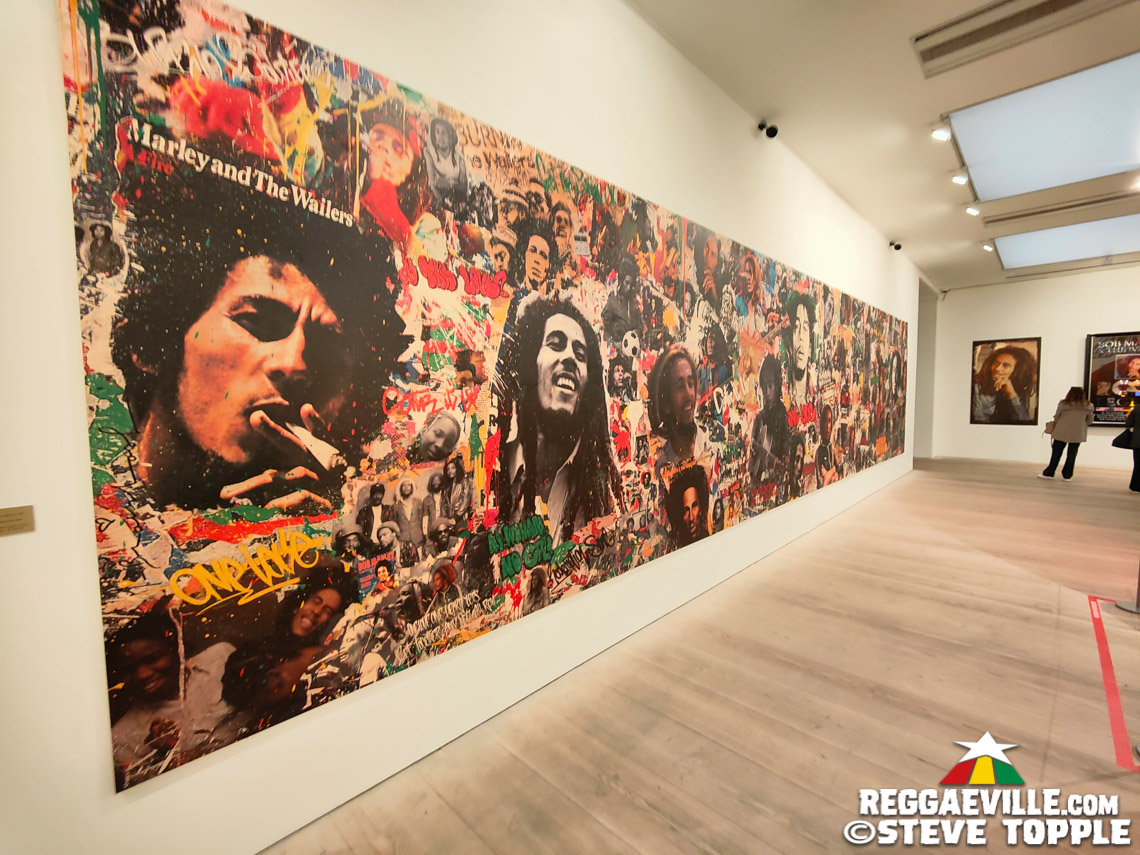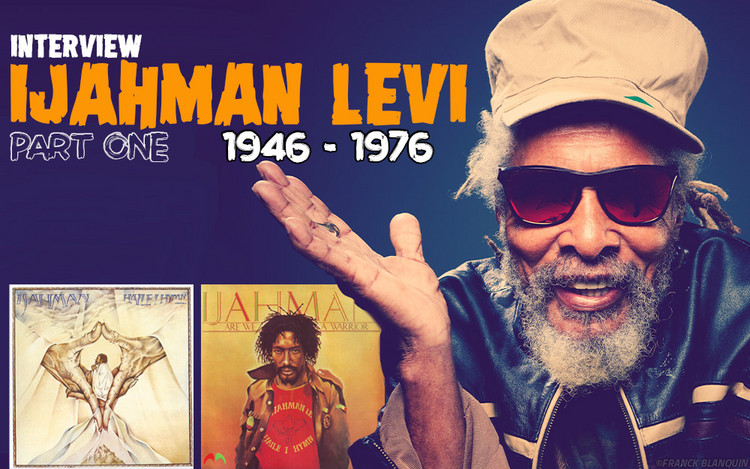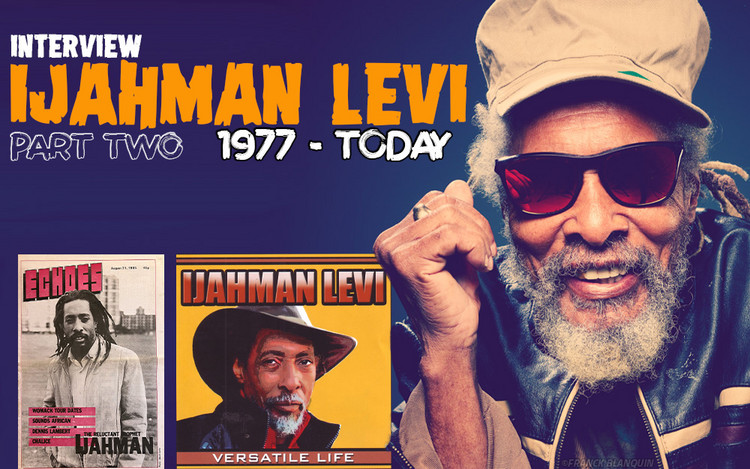Bob Marley & The Wailers ADD
Bob Marley One Love Experience in London... Ignore The Critics – You Do Feel The Magic
04/11/2022 by Steve Topple

The Bob Marley One Love Experience has been dividing opinion since it opened its doors this February. It has been constructed by US experiential production company Terrapin Station Entertainment with Marley’s estate consulting on the project. The world premiere is currently at the Saatchi Gallery in central London, and Cedella Marley opened the experience on February 2, 2022 to mixed reviews. But are the critic’s criticisms justified? Reggaeville paid the experience a visit on Saturday April 9, 2022 to find out. Check the full photo coverage here: GALLERY ONE | GALLERY TWO
Some of the corporate media have given a less-than lukewarm response to the experience. The Financial Times called it an “extractive” experience (noting the £24 weekend ticket price), saying it will leave you “waiting in vain for the magic”. David Katz in the Guardian noted the capitalist overtones of it, saying: “the Bob Marley One Love Experience is not especially nuanced, nor trying to be deep; this is very much a commercial enterprise celebrating Marley as an industry success story as much as a creative force”.
And FAD Magazine was particularly critical, calling it “style over substance” for the “Instagram generation”.
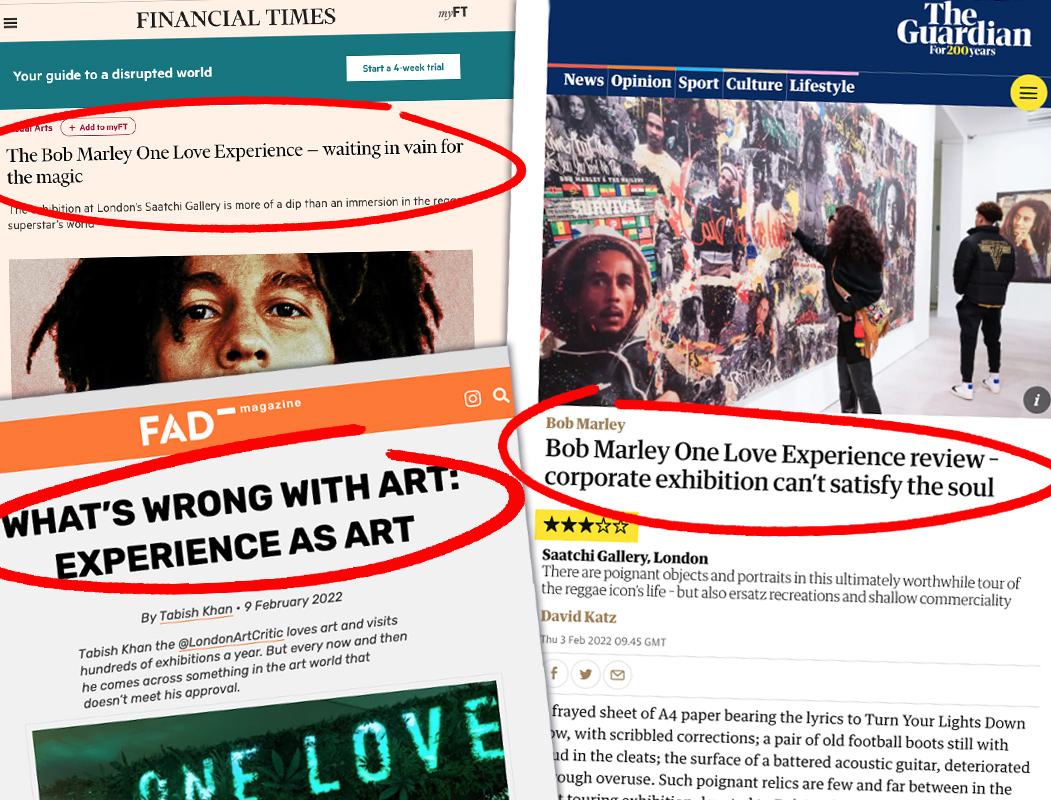
But does that really matter?
Let’s clear something up from the start. The Bob Marley One Love Experience is not supposed to be some visual thesis about the life, influences and nitty-gritty of the man, his culture and faith. It’s an opportunity for you, the visitor, to switch your brain off from the chaos in Babylon and go on a voyage where your own consciousness and ability to transcend space and time is only limited by the pace at which you walk.
OK, so the endorsement of Adidas at times plus the gift shop may not be for everyone. But as long as you go in with it clear in your mind that the Bob Marley One Love Experience isn’t here to smash the system and bring about a revolution – then you should come away satisfied; everyone there who Reggaeville saw and spoke with on 9 April were upbeat and joyfully immersing themselves in it.
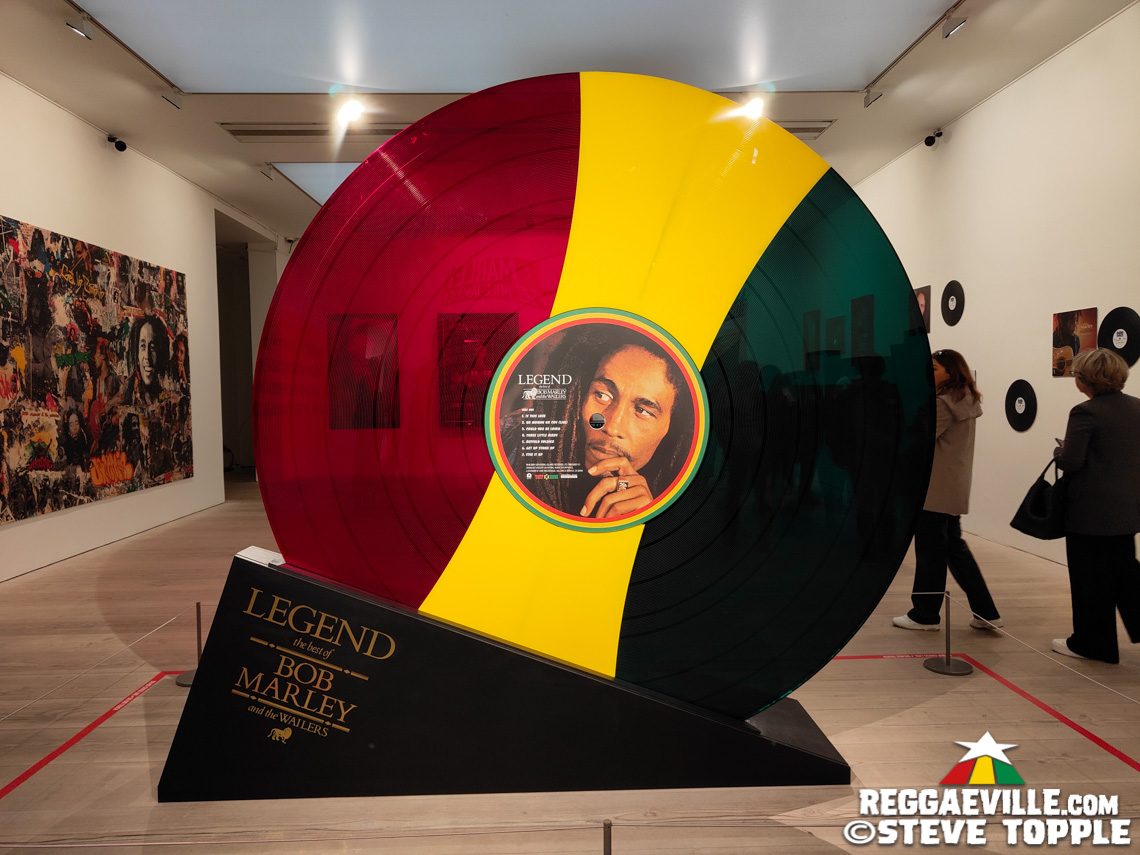
As you enter the Music Room, you’re greeted by the dulcet tones of Marley himself playing out against a backdrop of memorabilia. From the huge (reportedly the world’s largest) vinyl to smaller ones that have still been enlarged for the purpose of the exhibition, the room makes for an interesting delve into a brief history of this musical legend. Of particular interest was the glass-sealed display unit containing concert tickets and memorabilia from the 1979 Survival Tour (albeit with some errors on the information plates in relation to dates).
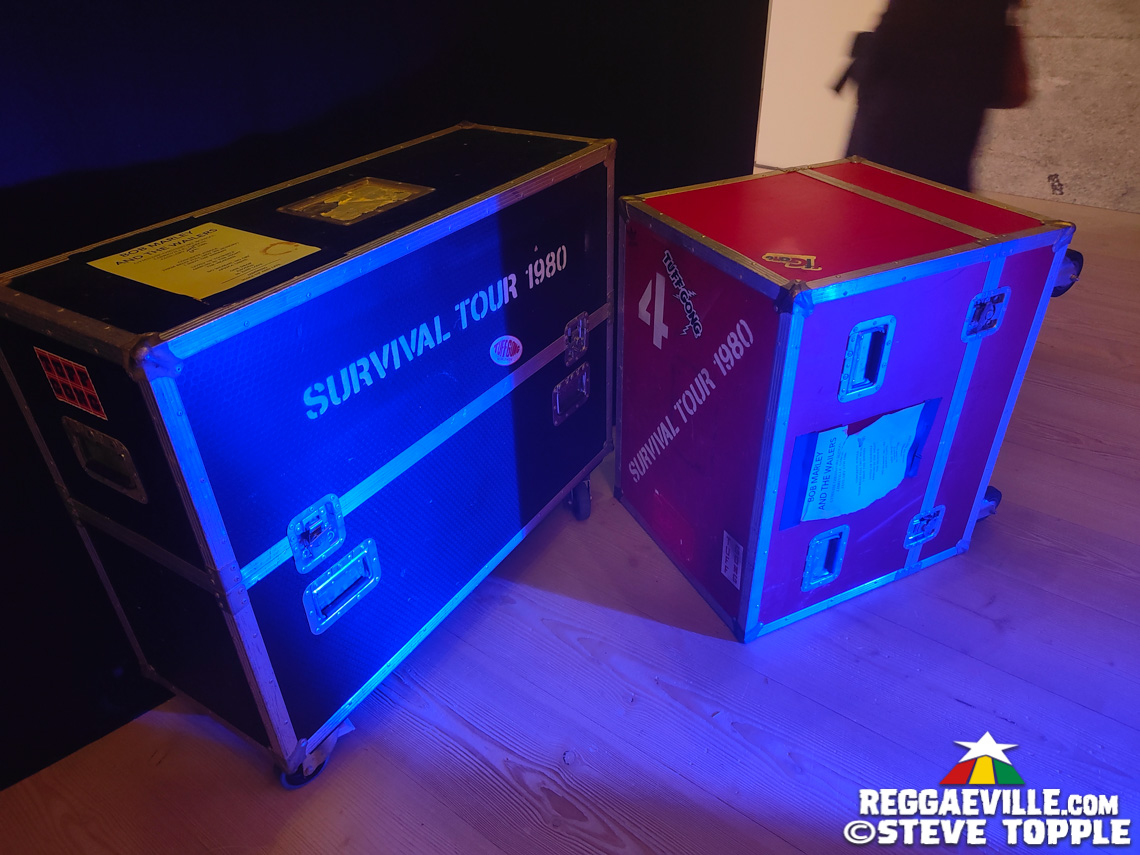
The digital collage by Mr Brainwash displaying Marley’s Island Records covers along with evocative slogans, song titles and photographic images of him is particularly pleasing. The replica shirt and guitar, along with a vintage scarf, seemed slightly out of place given they weren’t originals. But overall, the room was a well-constructed trip down memory lane of some of Marley’s greatest achievements.
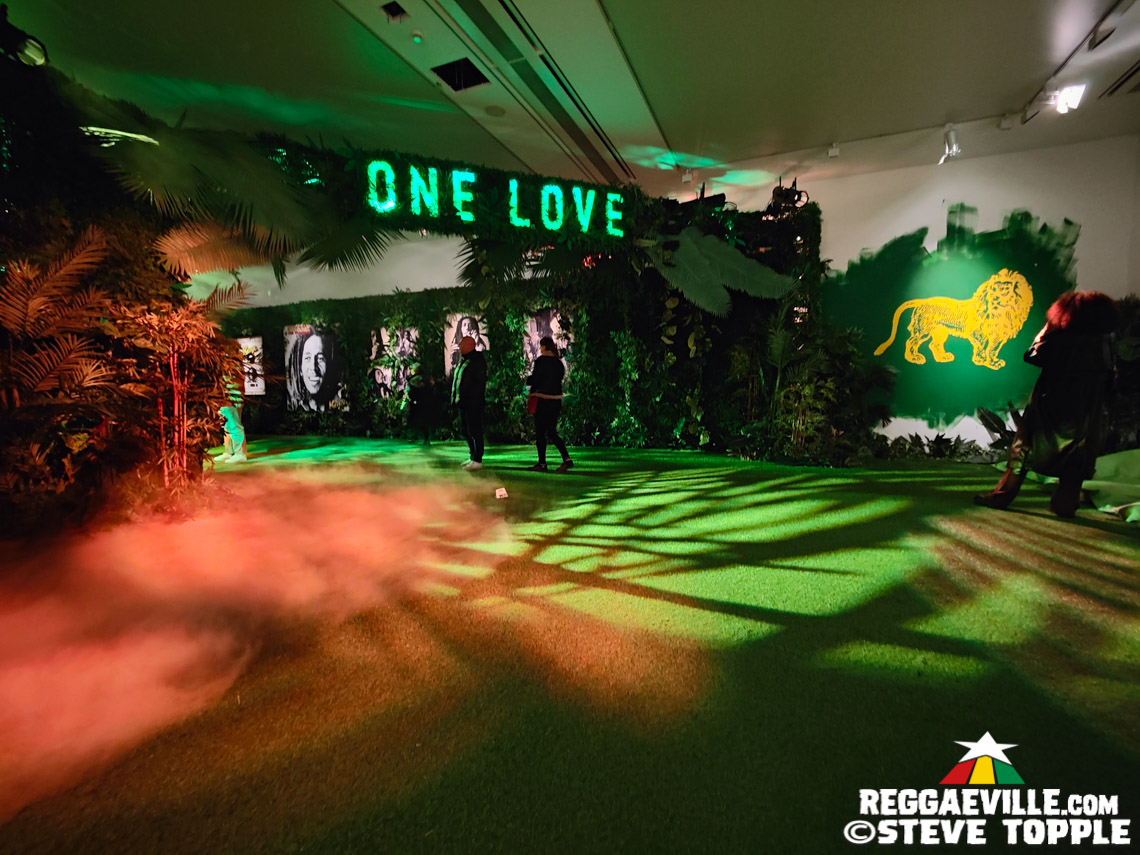
The second space was the One Love Forest. It was less about Marley and more about personal reflection as a visitor. Dry ice cascaded across the replica forest while pattering bubble rhythms, skanking guitars and laid-back one drops from Marley’s biggest hits washed across the surroundings. Once more, slogans and quotes adorned the walls: “Jah Live!”, “One Love” and “Let’s Get Together…” encapsulated the mesmerising vibes of the rooms. It was certainly evocative, and the varying images of Marley, mostly smoking weed, were well-placed. Aesthetically, when viewed as a sum of its parts, the room was pleasing and did indeed make you sit (or rather slouch on the bean bags) and reflect on Marley’s consistent message of unity, peace and emancipation and your own feelings on this.
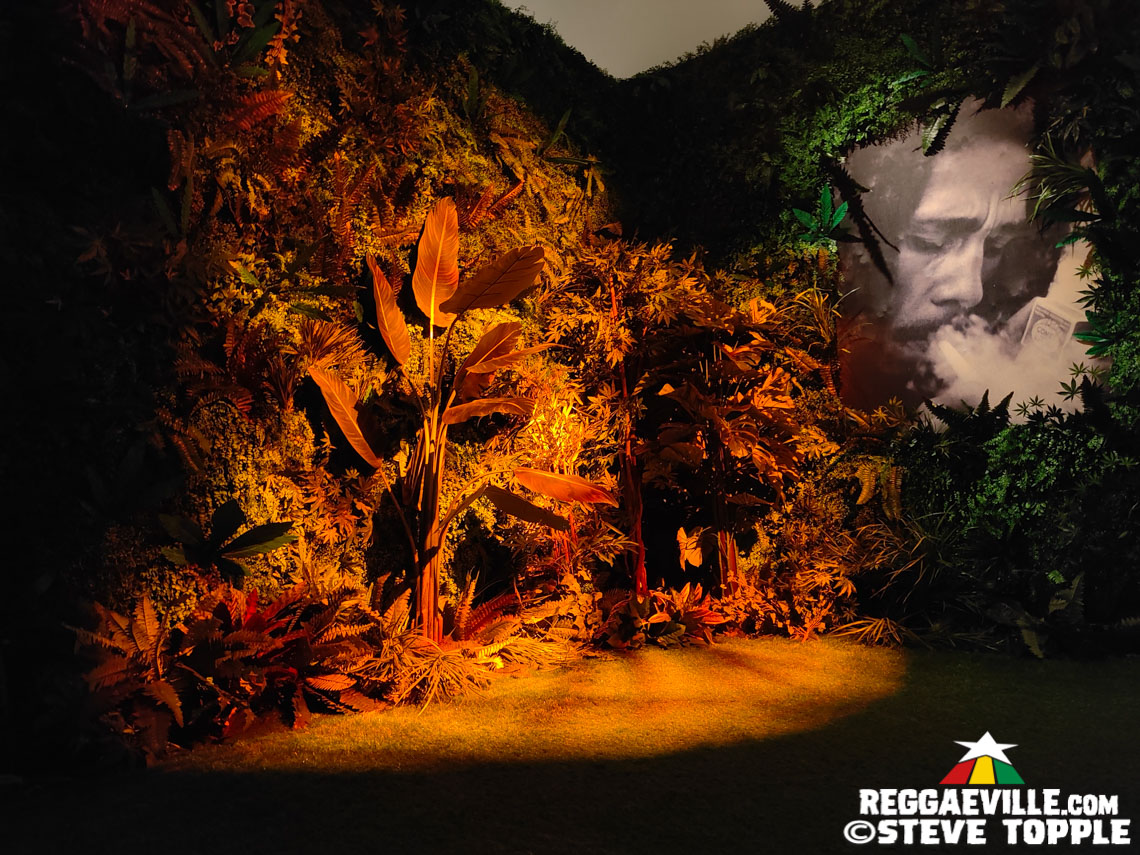
The passage that led through into the next room was once again evocative: images of Marley had been imprinted onto three, back-lit windows – to create an almost stained-glass effect: eulogising Marley to a status of a religious deity and creating a thoroughly ethereal experience as you slowly meandered into the Soul Shakedown Studio.
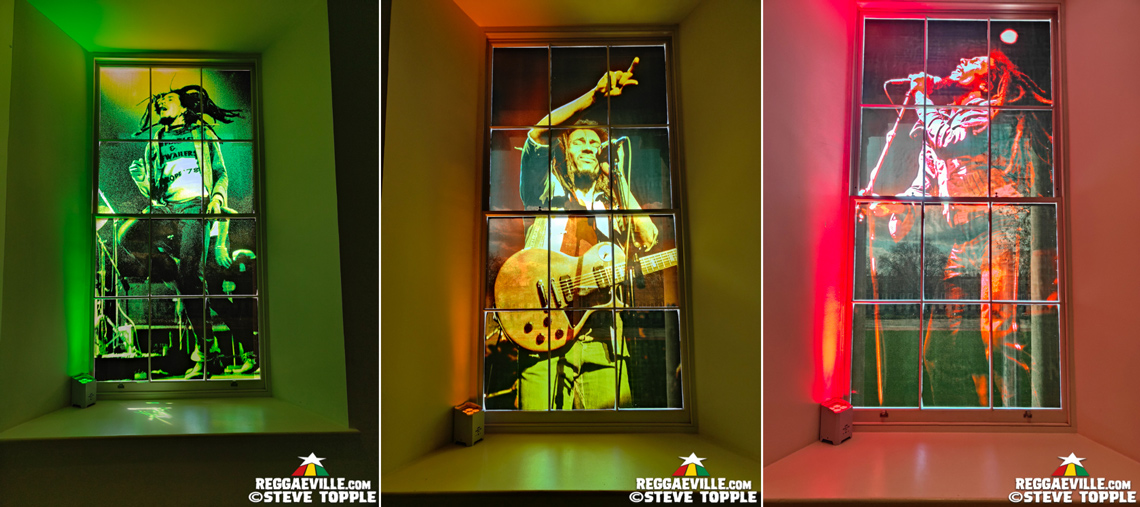
The space itself stood in contrast to the previous rooms. Visually busy (and aurally too, given the headphones you were encouraged to put on), the focus was an entire wall that was showing Marley live in concert in Los Angeles in 1973 on loop. This was enhanced by the ability to flip the output of your headphones: on one setting varying tracks were playing, but on another it changed to be in time with the live performance that was being shown. A clever touch, and one that worked well – albeit the quality of the screen displaying Marley could have been better – and maybe if it had been larger too, with all the light focused on there, then the experience would have felt more immersive. As it stands, your eyes were constantly distracted by the other imagery, the disco ball and the consistently changing light colour. But all the other photography (some previously unreleased) was pleasing, and the idea behind this room’s experience was intriguing and showed ingenuity.
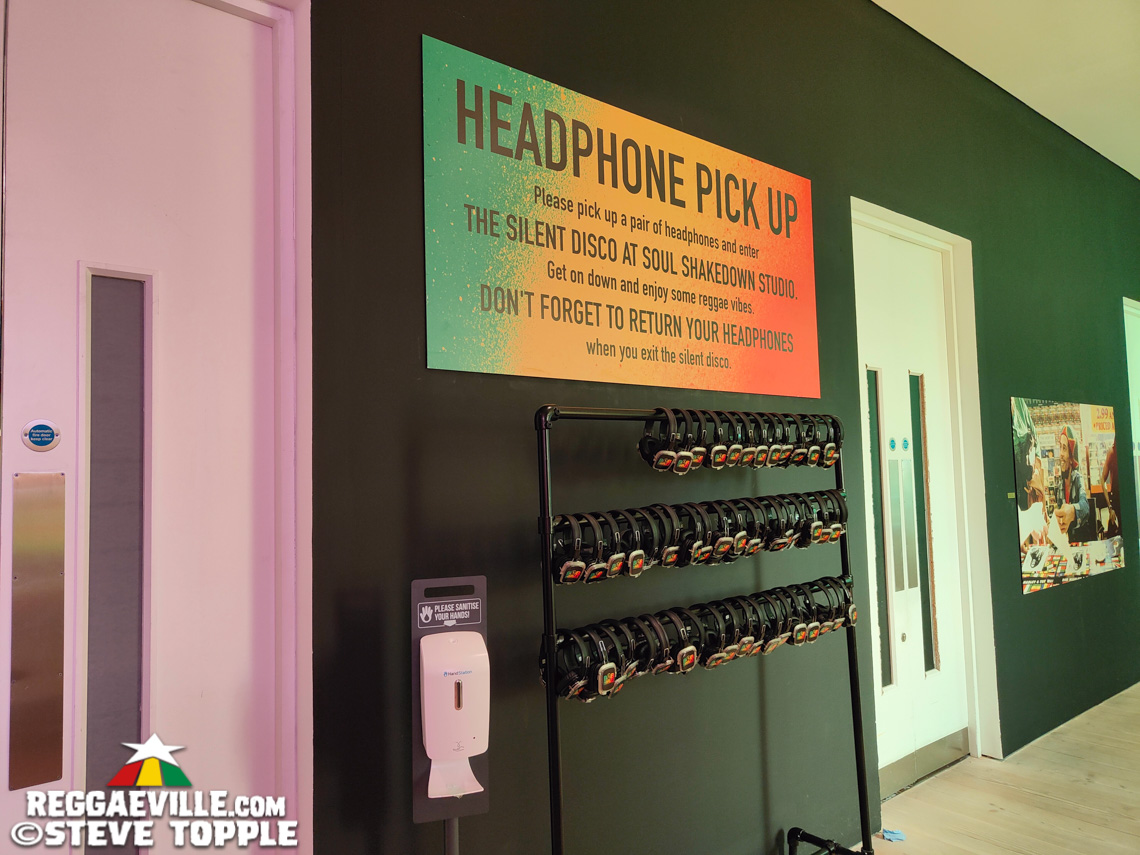
Once again there was a transition room - a chance for a photo op nonetheless, but not with the man himself, instead again several backdrops once more emblazoned with Marley slogans. This was a nice touch – but the most pleasing part of this room was the sepia collage of photos of Marley and the Wailers that was stationed on one wall. It was perhaps the best use of imagery in the entire exhibition: well lit, pleasingly placed and capturing the essence and feeling of the man himself.
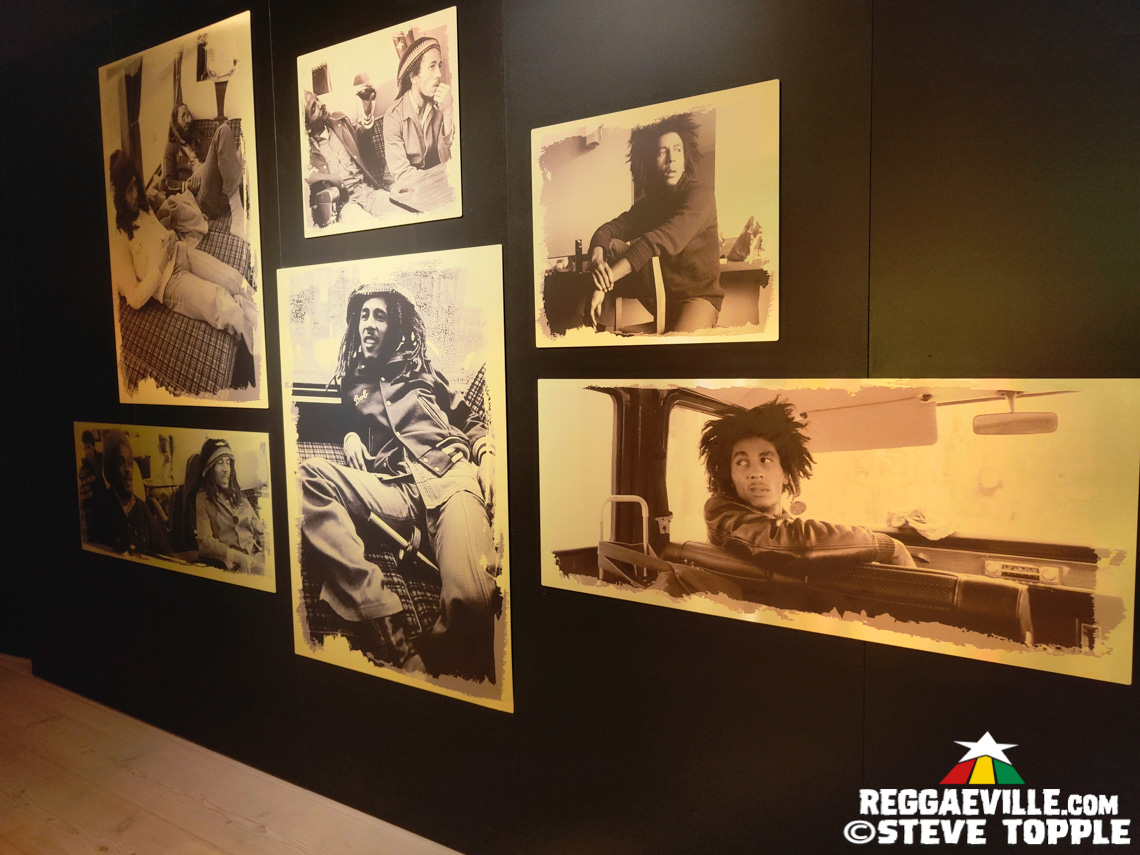
The next room was a tribute to Marley’s other great love: football and sport more broadly. Called the Beautiful Life Zone and again interactive, the space offered you a chance to play along on table football; experience a pinball machine and look at perhaps the largest selection of Marley photography of the exhibition. Standout pieces were a wall-mounted table tennis board with Marley pictures surrounding it and the vintage jukebox. This space contained perhaps the exhibitions most impressive piece of memorabilia, a pair of Marley’s actual trainers reportedly with the dirt still on them. It was an effective room and slotted in well to the overall exhibition.
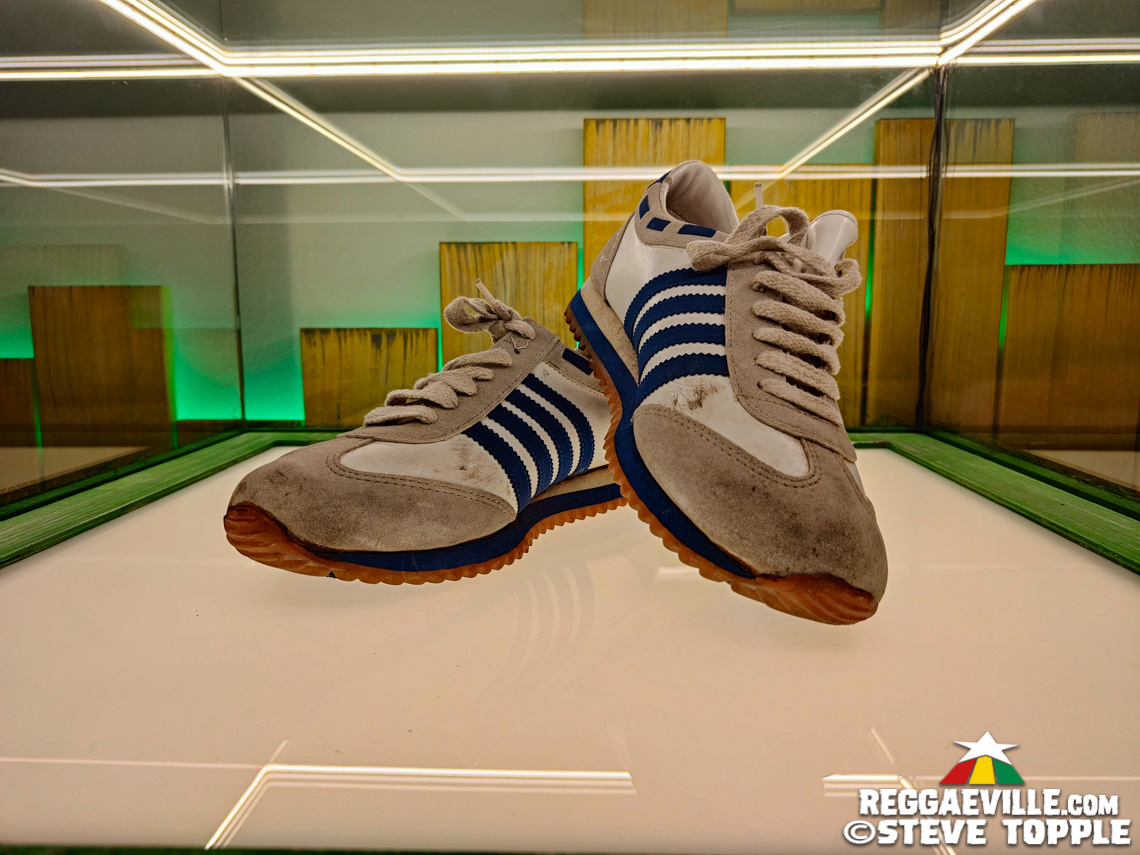
After a brief stop off in a dimly lit backstage corridor, with various speaker boxes purportedly from Marley’s tours (albeit with the date of the Survival Tour wrong at 1980, it was mostly 1979), you then entered an art exhibition of sorts – called the Concrete Jungle Street Art Expo. A first mural including work by The Postman was impressive, as was a second featuring work by Eric “Hue” Houston, Viktoria Chulok and Mark Phi Creations; a third had pieces by The Seasick Sailor and Bill Gausselin and a fourth was by Giulia Vesentini. There was a wall dedicated to fan art that people had submitted, plus the concept pieces by Mr Brainwash (images of Marley made from broken vinyl) were quite spectacular. And the snug mock-up of a 70s front room as Marley may have had it was a lovely touch.
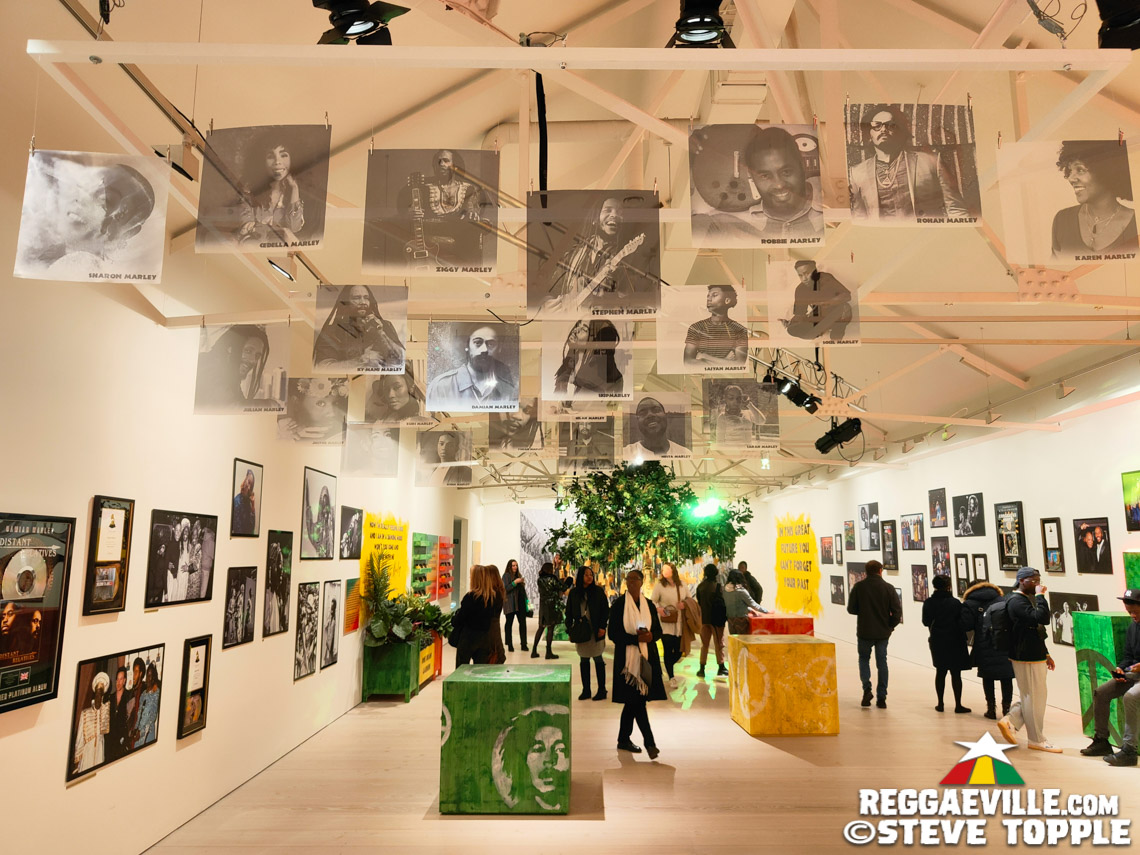
The final room, the Next Gen Zone, was a look to the future. There was a pleasing (and veritable) “family tree” of photographs of all the Marleys hanging from the ceiling. Grammy certificates from the likes of Damian and Ziggy were on the walls; a “One Love” piece of concept art (which seemingly intentionally looked like a sound system) allowed people to sit and take in their surroundings Then, to finish off the experience people could write their own messages of ‘one love’ and attach them to a tree: a simple yet effective gesture, marred by the fact that on the wall it said Marley sang the song 45 years ago – which is not strictly true: he and the Wailers originally released it in 1965, but then re-released it for the 1977 Exodus album. Also, the “Live for yourself and you will live in vain; live for others and you will live again” quote was actually from the track Pass It On, where Bunny sang lead.
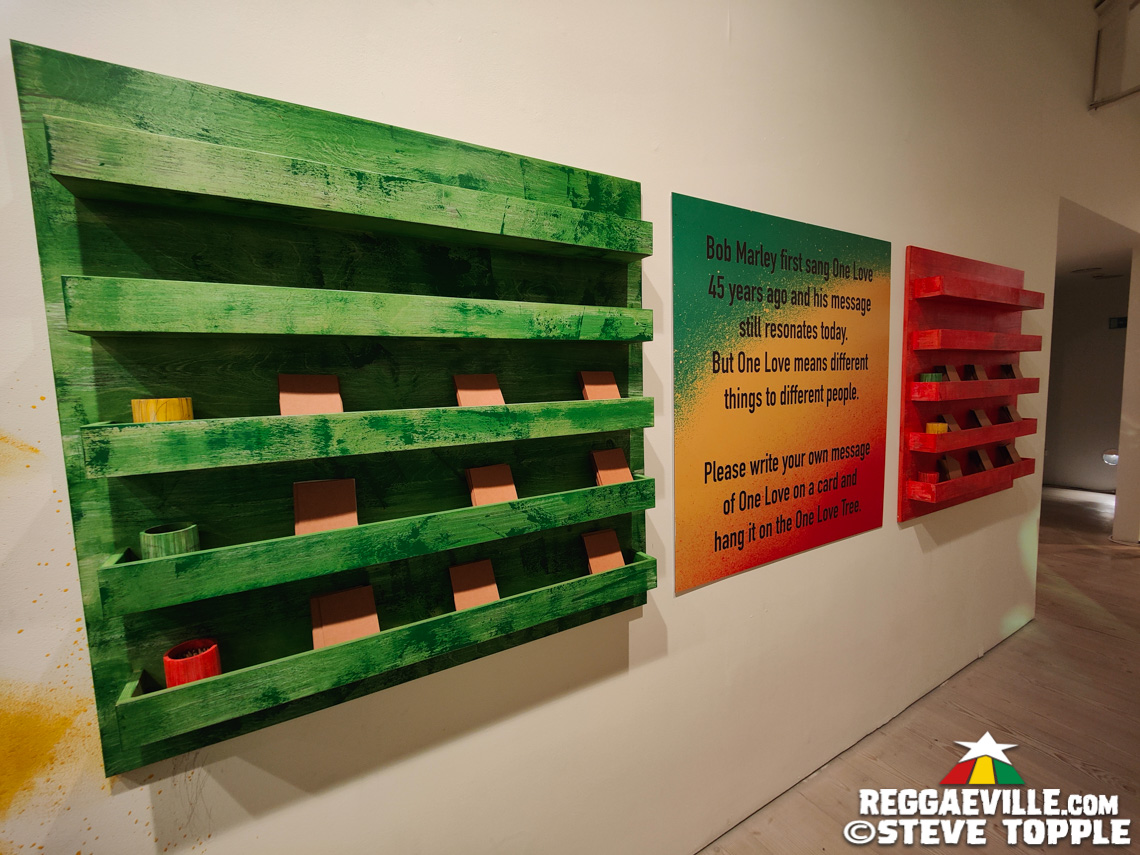
Of note is that the entire exhibition was well-constructed as a complete piece of sensory art: going from the initial brightly-lit ambience of the first room, to the mellow, at-dusk vibes of the next – leading into the heavenly auras of the transition corridor to the twilight disco theme of room three to the almost night-time feel of the passage that led into the morning brightness of room four, before a claustrophobic stop ‘backstage’ and the final, further lit daytime space of rooms five and six. Essentially, it gave the feel of a two-day walk-through of Marley’s life and worked very well to that end.
Overall, the Bob Marley One Love Experience was a pleasing affair. It was well-thought out, giving a varying look at his life, loves and essence as a human being. The layout worked very well, as did the concept-led design of each space and the selection of artwork was impressive. As an audience member, the onus was definitely on you to put in to the experience as much as it gave to you. It was a shame there were a couple of factual errors – but this didn’t distract from what is an overly uplifting and engaging experience, worth your time before it closes on 18 April. With the experience then going to other locations after London, what you take from it really is up to you – so be prepared to invest your mind and soul while you’re there.
Check the full photo coverage here: GALLERY ONE | GALLERY TWO
